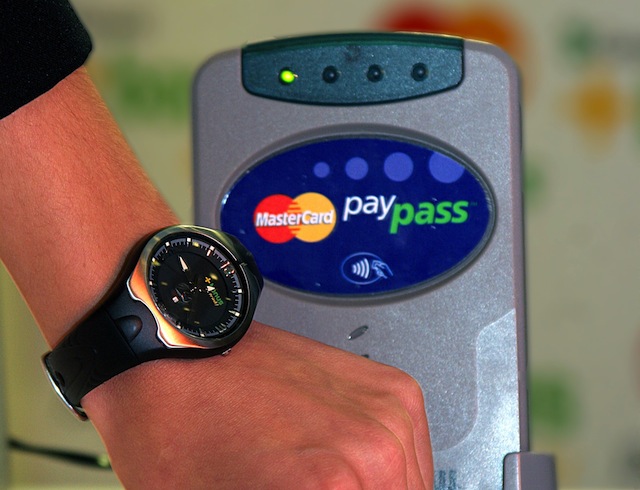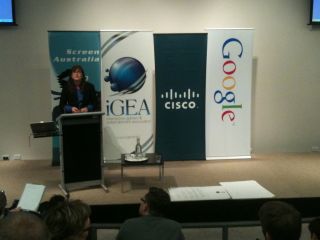This is a transcript of the digital arts opening keynote for the Digital Culture Public Sphere conference discussing the Australian government’s cultural strategy.
Thank you Senator Lundy. A little bit more about me, as well as being a writer and broadcaster on change I spent 18 months with the NSW Department of Trade & Investment setting up the Digital Sydney project.
Digital Sydneyis a program designed to raise the profile of Sydney as an international centre of the digital media industry.
One of the problems with Digital Sydney was that it was very inner Sydney centric and this is a perennial question we face as to where does Australian culture, and art, spring from? The first idea I’d like to throw to the room is that ‘digital’ frees us from many narrow geographic boundaries.
When we add the term ‘digital’ we hit another problem, that almost every aspect of our lives – be it in art, business or our personal lives – is being affected in some way by the Internet and digitalisation. In reality all art is becoming ‘digital’ in one way or another.
As broadband becomes more pervasive, particularly as the National Broadband Network is rolled out, we’ll see art and the creative industries become even more digitised.
In many ways we are today at the point in history not too dissimilar to that our great grandparents found themselves a hundred years ago. In 1911, our forebears couldn’t imagine the massive changes the century ahead would bring and we’re in a similar position in the first decades of the digital century.
The first half of the Twentieth Century saw radio start a cultural shift which was accelerated in the second half as television radically changed and redefined our culture. Today the Internet is doing exactly the same in ways none of us quite understand.
Given the massive disruption and technical advances we’re going through we need to be cautious about being too prescriptive as we can’t foresee many of the new technologies that will become normal to us over the next decade.
This provides a challenge for government agencies supporting the arts as the established gatekeepers such as galleries, production studios and regional organisations become less relevant as the means of distribution evolve and become easier to access.
We’re already seeing the traditional model of government support to big producers; be they factories, movie producers or games studios suffering as economic adjustment undermines many of their business model. The old economic development models are becoming irrelevant as history overtakes them.
It may well be that the role of governments over the next decade is to create a framework that allows new mediums, creation tools and distribution channels to develop.
One area we should be careful of when looking at the digital future of the arts is not to follow the UK’s Digital Economy Act where the protection of existing rights holders took precedence over the creative process.
It is important that governments create legislative frameworks that balance the rights of all stakeholders, consumers and new content creators with the objective of encouraging new works and innovations to evolve.
In an Australian context we need to acknowledge and develop our diverse population and the opportunities this presents. Our indigenous and immigrant communities with their artistic and cultural traditions give our national economy advantages that many other countries lack, this is one thing I regret I wasn’t able to push more in my role with the NSW government.
Education is another critical area, this isn’t just in the arts but right across Australian society and industry as new entrants into the workplace are expected to spring forth with the skills making them as productive as experienced workers, this is clearly a flawed idea, particularly when many of the tools business expects students to be skilled in weren’t invented when the students started their studies.
Over the next decade we’ll also have to confront one of the great Twentieth Century conceits; that artists are a separate breed from scientists, Engineers and business people.
Prior to the beginning of the last Century it was accepted a tradesman or inventor could also be an artist and this damaging idea of silos between creative and so called ‘real’ industries, suited only to a brief period of our mass industrial development, will have to forgotten. This will be a challenge to our governments, educators and training providers.
The digital arts are not about iPad wielding basket weavers, they about giving today’s workforce the creative tools and flexible, imaginative thinking to meet the challenges our mature, high cost workforce faces in a world where the economic rules are changing as fast as our technology.
We have a great opportunity at events like today to determine how we as a nation will benefit from the next decade’s new technologies that will change our arts communities and society in general.
The great challenge to policy makers will be dealing with the rapidly changing and evolving world that the digital economy has bought in the arts, in business and in society in general.
Today I’m sure we can bring together ideas on how we, and our governments, can meet these challenges.
Thank you very much Senator Lundy, Minister Crean and Pia Waugh for giving the community an opportunity to contribute to the development of this valuable policy.
Similar posts:




